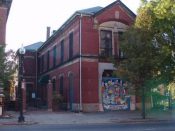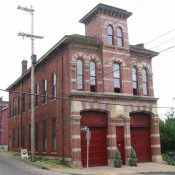Design for the lifespan of the building, not the current planned use.
How many times has your client tried to convince you that there is no need for accessibility/inclusion for people of all abilities in THEIR project? “We don’t get people who use wheelchairs in our building!” (makes me wonder about the usability of their front door….) “Our employees must be ablebodied to do the job so we don’t need to make anything accessible.”
- Dudley Firehouse for sale
- Firehouse for sale, Pittsburgh
A classic example is a firehouse. Certainly, the nature of the job requirements for firefighter include the ability to climb stairs with 100 pounds of hose on our back – this is an unlikely job for a wheelchair user. And they get to slide down that cool pole. However, if your building has a 50 – 100 year lifespan, what is the likelihood that that firehouse will remain a firehouse for the duration of its useful life?
In a quick Internet search, I found these firehouses that are being used or sold for other needs. Imagine how much less cost and resources you would have had to spend to include the elevator or the accessible toilet room at the beginning than to renovate. Is that a “greener” option? More socially sustainable, surely.
Design for the planned lifespan of the building and the range of abilities of the future users, planned or not.


I’ve been driving by this block of a firehouse on Whidbey Island for 3 years. I see it’s now for sale for $150K and I’d love to do something fun with it….
http://www.pnwlocalnews.com/whidbey/wnt/news/93817294.html
This is so great! It is what I’ll be speaking about at the National AIA Convention on May 13th in New Orleans! Let’s start a trend! what should we call it?
Rats, I wish I could go to convention this year to hear your talk! I agree about starting a trend – I think most Arch’s overlook the ever-changing use of buildings over their useful life. What to name it? Still thinking here……
Kathryn – I’d love to help you redo it – what community use could it serve? Adult day care? A few Universally designed housing units? The ideas are flowing….